What is Genocide?
Before 1944, the word genocide did not exist. In 1944, a Jewish lawyer from Poland named Raphael Lemkin wanted a way to describe the Nazi policies of systematic murder. He combined geno from the Greek word meaning “race” or “tribe” with cide, from a Latin word meaning “killing.” Today, the word genocide refers to violent crimes against a group with the intention to destroy the group and its existence. from The Holocaust: Racism and Genocide in World War II by Carla Mooney, illustrated by Tom Casteel, pages 9.
Genocide is a difficult topic so I wanted to see how it was covered in children’s books.
Image from Armenian Museum of America
Sadly, I did not realize how many genocides have taken place in the 20th century so this is by no means an exhaustive list of genocides; it is simply a list of genocides that I knew about.
I went to the Armenian Museum of America to learn more about genocide but found that I had more questions than answers:
- Why are some genocides recognized and not others?
- What happens when genocide is not recognized?
- What are the consequences of not knowing about these genocides?
- Which genocides were covered by the media?
- Which genocides are taught in history textbooks and why?
- Which genocides are portrayed in children’s and young adult books and why?
- What does it mean when some genocides are publicized and not others?
Can you please help me grow this book list? Thanks for your suggestions!
Native American Genocide
1492 – 1900
12 million Indigenous People in the United States died
About 12 million Indigenous people died in what is today the coterminous United States between 1492 and 1900. SE.edu
When a Ghost Talks, Listen by Tim Tingle
“We invisible listeners, Pushmataha ad his army, knew that Jackson’s next words carried a quiet and venomous blade, a knife to the heart of who we are as Choctaws.
“One Pushmataha is gone, he said, “they will be helpless. We’ll destroy their towns, their homes, and they won’t know what to do. The land will be ours.”
“And you have a plan to get rid of Pushmataha?”
“Oh, no,” said Jackson. “I would never do anything so heinous as to harm a fellow soldier. But he has certain weaknesses about the food he eats. I have spoken to the chef about his diet. Pushamata has, it seems, various allergies.”
“Seafood, among others,” said Jackson. “After a dinner of shrimp one night in New Orleans, I watched almost die. His face turned red and he passed out and fell to the floor.”
“A brilliant plan,” said Black Suit. “No guns, no blood, a natural death.”
” A diet of seafood, a little at a time,” said Jackson. “He’ll never make it out of Washington alive.”
Ten-year-old Isaac meets Choctaw Chief and U.S. Army General Pushmataha on the “trail of tears” to Indian Country. He time travels back to the time when Pushmataha was President Andrew Jackson’s invited guest in Washington D.C., but it was actually Jackson’s plot to murder him by exploiting the Chief’s shellfish allergy.
It might not be widely known that the Choctaw were allies of the U.S. Government and that Choctaw Chief Pushmataha was also a U.S. Army General and close friend of Andrew Jackson. In this excellent series, the reader learns how Chief Pushmataha and other Choctaw chiefs were murdered by Andrew Jackson and his people, in order to remove them from their lands. [middle grade, ages 8 and up]
Soft Rain: A Story of the Cherokee Trail of Tears by Cornelia Cornelissen
In 1838, the Cherokee people were forced to relocate from North Carolina to the West. It is a long and dangerous journey and Cornelissen portrays this vividly through the eyes of Soft Rain, a nine-year-old girl. [middle grade, ages 8 and up]
Albania
1912 and 1913
10,000 to 25,000 Albanians were killed or died because of hunger and cold during that period
The massacres of Albanians in the Balkan Wars were perpetrated on several occasions by the Montenegrin and Serbian armies and paramilitaries during the conflicts that occurred in the region between 1912 and 1913.
Armenian Genocide
1915-1918 and 1920-1023
1.5 million Armenians died
During World War I, the Young Turks political reform movement moved to eliminate the Armenian people from the Ottoman Empire. Of the 2 million total Armenians, 1.5 million were killed. The Armenian people were tortured, massacred, and starved. The majority were sent into the desert to die of thirst and hunger. The Armenian Genocide took place from 1915 to 1918, with renewed instances of brutality occurring between 1920 and 1923. DoSomething.org
Dance of the Banished by Marsha Forchuk Skyrpuch
Ali immigrated to Canada right before the war breaks out in 1914 and is sent to Internment Camp as an enemy alien. She (Zeynep) watches horrified as her Christian Armenian neighbors are rounded up and forced marched into the desert to die. She must cross a continent and an ocean to find Ali but first, she must save her Armenian friends. [young adult, ages 12 and up]
Starting in 1915, 500,000 to 1.5 million ethnic Armenians living in Turkey were killed or expelled from their ancestral lands, where they’d lived mainly peaceably with the Turks for centuries. Armenians call the slaughter genocide; Turks say it was the consequence of the larger war, in which many groups, including Turks, suffered terribly. Five of the few remaining Armenian survivors reflect on the horrors they faced fleeing their homeland as children and on what life has been like for them in exile. National Geographic
Ukraine: The Holodomor
1932-1933
2,711,000 Ukrainians died
The Holodomor, also known as the Terror Famine or the Great Famine, was a man-made famine in Soviet Ukraine from 1932 to 1933 that killed millions of Ukrainians. The Holodomor famine was part of the wider Soviet famine of 1932–1933 which affected the major grain-producing areas of the country.
Don’t Tell the Nazis by Marsha Forchuk Skrypuch
The year is 1941. Krystia lives in a small Ukrainian village under the cruel — sometimes violent — occupation of the Soviets. So when the Nazis march into town to liberate them, many of Krystia’s neighbors welcome the troops with celebrations, hoping for a better life.
But conditions don’t improve as expected. Krystia’s friend Dolik and the other Jewish people in town warn that their new occupiers may only bring darker days.
The worst begins to happen when the Nazis blamed the Jews for murders they didn’t commit. As the Nazis forced Jews into a ghetto, Krystia does what she can to help Dolik and his family. But what they really need is a place to hide. Faced with unimaginable tyranny and cruelty, will Krystia risk everything to protect her friends and neighbors? from publisher
Review from Ms. Yingling Reads:
“I love how Skrypuch bases her stories on those told by actual survivors, and how they cover facets of the Holocaust about which I have never read. The details of the privations are something I always find interesting; things like the small amounts of food people ate, how hard it was to get clothing, and how difficult it was to go about daily life with the Nazis watching every move are all things I think it’s important for students to know. There are just enough characters to get a good feel for Krystia’s extended family and her village, and it’s interesting to see characters like the German mother and daughter who move to the town because they are displaced.” [middle grade, ages 8 and up]
Winterkill by Marsha Forchuk Skrypuch
Review by Ms. Yingling Reads:
“Nyl’s family runs a farm in 1930s Ukraine near the village of Felivka, and life is becoming more and more difficult now that Stalin has come to power. When the government sends around Canadian George White and his daughter Alice to take an inventory of their farm, the family, which includes Nyl’s younger siblings Slavko and Yulia, knows this will not end well. The government is trying to force all farmers to join a collective, the kolkhoz, and is taking livestock, equipment, and other property to start this farm. Those who don’t cooperate are deemed “kulaks” and face harsh treatment. Unfortunately, this treatment comes close to home when Nyl’s uncle argues with Comrade Chort, who shoots him dead, leaving behind his wife and baby daughter. The aunt is removed from the house, and all of her property is taken by Chort, who moves his family in. Nyl is lucky that he is able to get some of his family’s animals out of his uncle’s barn. The farmers who have joined the kolkhoz work long hours, but are hopeful that the government will pay them well, but that does not happen. Eventually, Nyl’s family has all of their seed and equipment taken away, but are still expected to meet a quota for growing grain. Even the family’s food is taken away, forcing Nyl and Slavko to travel to the new tractor factory to work there. Even Slavko, at nine, works all day making bricks. When the boys find out that the tractor factory is not going to be providing tractors for the upcoming season, they know how devastating this will be, and return home. Their father has been beaten, can barely walk, and knows it is time to try to leave Ukraine. In the end, only Nyl’s aunt and cousin are sent to try to make it to Poland. Conditions worsen, food is scarce, and the father dies after Yulia decides that she is going to join the kolkhoz, having informed her family. Food becomes so scarce that Nyl and his mother try to dig up grain from the kolkhoz field, but they are discovered and the mother is shot and killed. Nyl has an address for Roman, whose father and mother were killed earlier, and decides to set out for the city to find him. Nyl meets Alice again and hopes that she and her father, who has become disillusioned with Stalin, can get him out of the country. He manages to get forged identification papers, and they plan a sightseeing trip as cover, but when her father is arrested and Slavkov decides he wants to stay at the tractor factory, she and Nyl try to escape on their own. The two meet up with Roman, who has taken to stealing in order to survive and gain enough strength to move on. They make their way into Russia, and end up at the farm of Anna, who is elderly and needs help. She is kind and takes good care of them, but Alice manages to find a way to get back to Canada. Nyl is determined to keep going, even though he suffered so many losses.” [middle grade, ages 8 and up]
Holocaust
1941-1945
6 million Jews died
The Holocaust, also known as the Shoah, was the genocide of European Jews during World War II. Between 1941 and 1945, Nazi Germany and its collaborators systematically murdered some six million Jews across German-occupied Europe; around two-thirds of Europe’s Jewish population. Wikipedia
I keep track of Holocaust Books for Kids which has more than 104 picture books, middle grade, graphic novels, and young adult books.
The Holocaust in Lithuania
June–December 1941
190,000–195,000 Jews died
In 1939, Hitler and Stalin secretly divided Eastern Europe between them. Lithuania, pressed up against the Russian border, was allotted to Stalin and was absorbed into the USSR in 1940 after a sham election in which the Stalin-backed party was the only one on the ballot. Jews suffered under Soviet occupation. Since they ran a disproportionate number of businesses, newspapers, and civic organizations—the civil society institutions with no future in a Soviet utopia—they were natural targets for the Stalinists and thousands were deported to Siberia. At the same time, since there were also many Lithuanian-Jewish communists, Jews were blamed by their countrymen for the Soviet takeover. That Russian Jews had been wildly overrepresented in the generation that led the Bolshevik Revolution is indisputable. But by the time World War II broke out, Stalin had long since purged most Jewish Communists from the Soviet elite in Moscow. After the war, Jews would have only a minor role in running Soviet Lithuania, in part because of Soviet anti-Semitism but, more crucially, because nearly all of them would be dead. from Slate
An estimated 95 percent of Lithuania’s Jews, more than 200,000 people, were massacred as the Third Reich took hold — one of the highest proportions of any country affected by the Holocaust.
Yet the dominant narrative in Lithuania has long been one of resistance to both the Soviets and the Nazis, a hallmark of national identity that state officials have worked to reinforce. from NBC News
Between Shades of Gray by Ruta Sepetys
Fifteen-year-old Lina is a Lithuanian girl living an ordinary life — until Soviet officers invade her home and tear her family apart. Separated from her father and forced onto a crowded train, Lina, her mother, and her young brother make their way to a Siberian work camp, where they are forced to fight for their lives. Lina finds solace in her art, documenting these events by drawing. Risking everything, she imbeds clues in her drawings of their location and secretly passes them along, hoping her drawings will make their way to her father’s prison camp. But will strength, love, and hope be enough for Lina and her family to survive? [young adult, ages 12 and up]
Nazi Genocide of Ethnic Poles
1941-1945
1,800,000 Poles died
The Silver Sword by Ian Serraillier
The dramatic story of three Polish children during and just after World War II, whose parents are taken away by the Nazis and their house blown up. The children manage to escape over the rooftops and join the gangs of orphans living in the ruins of the bombed city, existing as best they can. The “silver sword” is only a paper knife, but it is the talisman that, after the Germans have been driven out of Warsaw, gives Ruth, Edek, and Bronia the hope and courage to make an astonishing journey across Europe with their friend Jan until they reach a refugee camp where they are reunited with their parents. [middle grade, ages 8 and up]
Rodzina by Karen Cushman
Rodzina Clara Jadwiga Anastazya Brodski’s story begins in Chicago, in 1881, as she is about to board a railroad car on an orphan train, as they were known…In her prologue, Cushman describes visiting her great-grandmother’s grave and reading ”Rodzina Czerwinski” on the stone. Rodzina means ”family,” and this book, she says, is about the search for a family. She has created a delightful, thoroughly Polish, heroine. But the orphan train, the enormous other half of the story, is curiously incomplete. NY Times review. From Polish Art Center. [middle grade, ages 10 and up]
Ethnic Cleansing of Bosnian Muslims
1992–1995
100,000 Bosniak (Bosnian Muslim) and Croatian civilians died
Starting in April 1992, Serbia set out to “ethnically cleanse” Bosnian territory by systematically removing all Bosnian Muslims, known as Bosniaks. Serbia, together with ethnic Bosnian Serbs, attacked Bosniaks with former Yugoslavian military equipment and surrounded Sarajevo, the capital city. Many Bosniaks were driven into concentration camps, where women and girls were systematically gang-raped and other civilians were tortured, starved, and murdered. Holocaust Museum Houston
Three Summers: A Memoir of Sisterhood, Summer Crushes, and Growing Up on the Eve of War by Amra Sabic-El-Rayess and Laura L. Sullivan
Author perspective from Nerdy Book Club:
“So, in Three Summers, I travel back to a time before the Bosnian Genocide when I first began to understand what dehumanization is and how it manifests early in a child’s life. I move upstream in my life to narrate a story of five cousins, including an 11-year-old Amra, to show how our love for one another allowed us to become closer than sisters despite our differences. Three Summers takes place in 1980s Yugoslavia and warns us where hate can lead.
At the end of Three Summers, I share the story of what happened to each of the main characters, including my cousins. Was our sisterhood sustained by love or broken by hate? You will have to read the story to find out. But what I will share is this — during the Bosnian Genocide, these three summers I spent with my sisters, particularly with Zana, sustained my hope that humanity still exists. And every day at 5:55 pm, even if bombs were falling, I thought of my sisters, our love of laughter, life, and one another. I vowed that if I survived the horrors of war and genocide, I would ensure that we see each other again one day.
But unlike me, many children don’t get to survive and never get to live their dreams or experience their first summer crushes. Three Summers is therefore a warning, a lesson, and an act of love and solidarity with all children who feel disempowered, erased, and voiceless. By telling the stories that humanize the dehumanized I hope to inspire resilience to hate in all of us. Three Summers is also my call to action – to you — to help uplift the lessons of unity and together build a future where each and every child feels they have a chance to live, laugh, love, and learn.” [middle grade, ages 8 and up]
Cambodia Killing Fields
1975-1979
1.7 million Cambodians died
The Cambodian genocide was the systematic persecution and killing of Cambodians by the Khmer Rouge under the leadership of Communist Party of Kampuchea general secretary Pol Pot, who radically pushed Cambodia towards an entirely self-sufficient agrarian socialist society. Wikipedia
Who Belongs Here?: An American Story by
A refugee’s story of who belongs here in America? After facing the most brutal of regimes, Nary, his grandfather, and his uncle are able to leave a refugee camp to relocate to America. Far from being the land of opportunity, they face racism. Similarly, Nary is bullied at school. Use this book to help students understand the refugee experience and to build bridges of understanding and compassion. Italicized notes on each page give a deeper view of the immigration experience. This book is also great paired with immigration picture books from other countries. [picture book, ages 8 and up]
A Path of Stars by Anne Sibley O’Brien
This beautiful story connects a multigenerational Cambodian family from their past to their present, and from Cambodia to the United States. The grandmother is the glue of the family and she tells her grandchildren about the difficult journey she made with her brother and her baby, their mother. The path of stars that guides them to safety is symbolic of all their lost ones as well as her granddaughter whose name means star in Cambodian. When the grandmother’s brother dies — he has returned to Cambodia after the war where he starts a new family — the light goes out on the grandmother. The granddaughter, Dara, knows the path of the stars to bring her back. This is the perfect picture book to introduce children to the plight of Cambodian refugee. It’s realistic in its depiction but not too scary. [picture book, ages 6 and up]
The Cambodian Dancer: Sophany’s Gift of Hope by
Little Brother by Allan Baillie
Vithy and his older brother Mang escape from the Big Paddy rice fields, the sole survivors of their family. On the run from the Khmer Rouge soldiers, Vithy is separated from his brother in the forest and must find his way to safety on his own, hoping against hope, that the soldiers they encountered have not killed his brother. While this book is not as graphically violent, it still gives a realistic and page-turning view of life under the Khmer Rouge. [chapter book, ages 10 and up]
A Song for Cambodia by Michelle Lord, illustrated by Shino Arihara
This is the true story of Arn Chorn-Pond, the founder of Cambodian Volunteer for Community Development which encourages community service and cultural rebuilding in Cambodia. His own story of survival during the Khmer Rouge regime is heartbreaking. From a musical family himself, music saved his life. Now he works to save traditional Cambodian music. Use this book to teach kids about the brutality of the Khmer Rouge regime, as well as to inspire them on how a single individual can save the world. This is also a book that celebrates music as more than just entertainment. [picture book, ages 8 and up]
Half a Spoon of Rice: A Survival Story of the Cambodian Genocide by Icy Smith, illustrated by Sopaul Nhem
The Cambodian genocide is a difficult topic to teach children, but this picture book balances the horrors with moments of humanity and kindness between two children. With chilling similarities to the Jewish Holocaust, families are separated and forced into work camps. Food is scarce. The young boy in the story boy spends four long years starving in this labor camp, surviving on half a spoon of rice a day, until the Vietnamese Liberation Army troops free them. Pair this with a unit on the Holocaust or other genocides in world history. [picture book, ages 10 and up]
Lost Boys and Girls of Sudan
1987-2005
2 million Sudanese died
The Lost Boys of Sudan refers to a group of over 20,000 boys of the Nuer and Dinka ethnic groups who were displaced or orphaned during the Second Sudanese Civil War. Two million were killed and others were severely affected by the conflict. Wikipedia
 Brothers in Hope: The Story of the Lost Boys of Sudan by
Brothers in Hope: The Story of the Lost Boys of Sudan by
The Lost Boys of Sudan were usually the sole survivors of their families who were systematically killed village by village during the Sudan War. Those boys who were tending cattle survived, only to come back to find everything destroyed. This is the case of eight-year-old Garang who then embarks on a treacherous journey to safety first to Ethiopia, and then Kenya, joining up with other boys in the same situation. Their survival is a miracle and a testament to their courage and the power of the human spirit. [advanced picture book, ages 8 and up]
A Long Walk to Water by Linda Sue Park
In Southern Sudan, Linda Sue Park tells two stories of a boy, Salva, and a girl, Nya, based on actual events. The boy’s story is set in 1985 when his village has been decimated by war and he must survive on his own, making a perilous journey to a refugee camp. He is a Lost Boy of Sudan.
Nya’s story is set in 2008. Her struggle for survival revolves around a daily struggle to find water, a journey that consumes her entire day. Both Salva and Nya are connected in both war and peace. Salva is Dinka, a tribe that Nya’s people fight with over access to the water. Many people in Nya’s village have died over that.
The long walk to water is about to change for her village. Both Salva and Nya play a part in this, and the ending brings hope for a better future. [middle grade, ages 10 and up]
Rwanda
1994
800,000 Hutu and Twa Rwandan minority groups were slaughtered by ethnic Hutu extremists
The Rwandan genocide, also known as the genocide against the Tutsi, occurred between 7 April and 15 July 1994 during the Rwandan Civil War. During this period of around 100 days, members of the Tutsi minority ethnic group, as well as some moderate Hutu and Twa, were killed by armed militias. Wikipedia
The Red Pencil by Andrea Davis Pinkney, illustrated by Shane W. Evans
Amira is twelve when war breaks out in Southern Sudan, and her peaceful village is attacked. Her father is killed and now she, her mother, and her sisters make the difficult journey to a refugee camp. Traumatized, Amira is unable to speak. At the camp, she is given a red pencil and pad of paper which helps her reclaim her voice and her creative spirit. [novel in verse, ages 9 and up]
Twenty-five years ago, at least 800,000 people were killed in Rwanda in just 100 days. Al Jazeera
Muslim Rohingya People
2016-2017
At least 200 Rohingya villages were destroyed and burned by the military, and an estimated 13,000 Rohingya were killed. Al Jazeera
The Rohingya genocide is a series of ongoing persecutions and killings of the Muslim Rohingya people by the Burmese military. The genocide has consisted of two phases to date: the first was a military crackdown that occurred from October 2016 to January 2017, and the second has been occurring since August 2017. Wikipedia
The Unexpected Friend: A Rohingya Children’s Story by Raya Rahman, illustrated by Inshra Sakhawat Russell
Faisel lives in a refugee camp with his sisters and mother. He and his friend Rahim finds a bird with a broken wing. They leave to gather firewood for cooking and have Faisel’s sisters look after the bird. While on their wood gathering mission, Faisel falls and hurts his arm. He looks after the bird and when it is healed, he makes the decision to let it go to reunite with its family. This book does a wonderful job of realistically depicting life for the Rohingya in a refugee camp, while imparting a positive message about kindness, generosity, and hope even during the most difficult of times. [picture book, ages 5 and up]
The Rohingya have been systematically driven out by the Myanmar government leading to the fastest growing humanitarian crisis in recent years. from Vox
p.s. Related posts:
Resources for Holocaust Memorial Day
Holocaust Performing Art Show: For Our Fathers
Haunting Holocaust Books for Kids
Great Topics from A Kids Book About …
166 Chapter Books for Difficult Situations: #MGGetsReal
p.p.s. Mass. district pilots genocide studies, history of math
The school committee of Pittsfield Public Schools in Massachusetts has voted to approve two pilot courses: a popular social studies class on genocide studies that launched this year at one high school and a course on the history of math at the district’s other high school. The genocide studies course is part of a state mandate requiring education offerings on the Holocaust, the genocides in Armenia and Rwanda, and 500 years of history of genocide events. Full article here.
To examine any book more closely at Indiebound or Amazon, please click on image of book.
As an Amazon and IndieBound Associate, I earn from qualifying purchases.
Follow PragmaticMom’s board Multicultural Books for Kids on Pinterest.
Follow PragmaticMom’s board Children’s Book Activities on Pinterest.
My books:
Food for the Future: Sustainable Farms Around the World
- Junior Library Guild Gold selection
- Selected as one of 100 Outstanding Picture Books of 2023 by dPICTUS and featured at the Bologna Children’s Book Fair
- Starred review from School Library Journal
- Chicago Library’s Best of the Best
- Imagination Soup’s 35 Best Nonfiction Books of 2023 for Kids
Amazon / Barefoot Books / Signed or Inscribed by Me

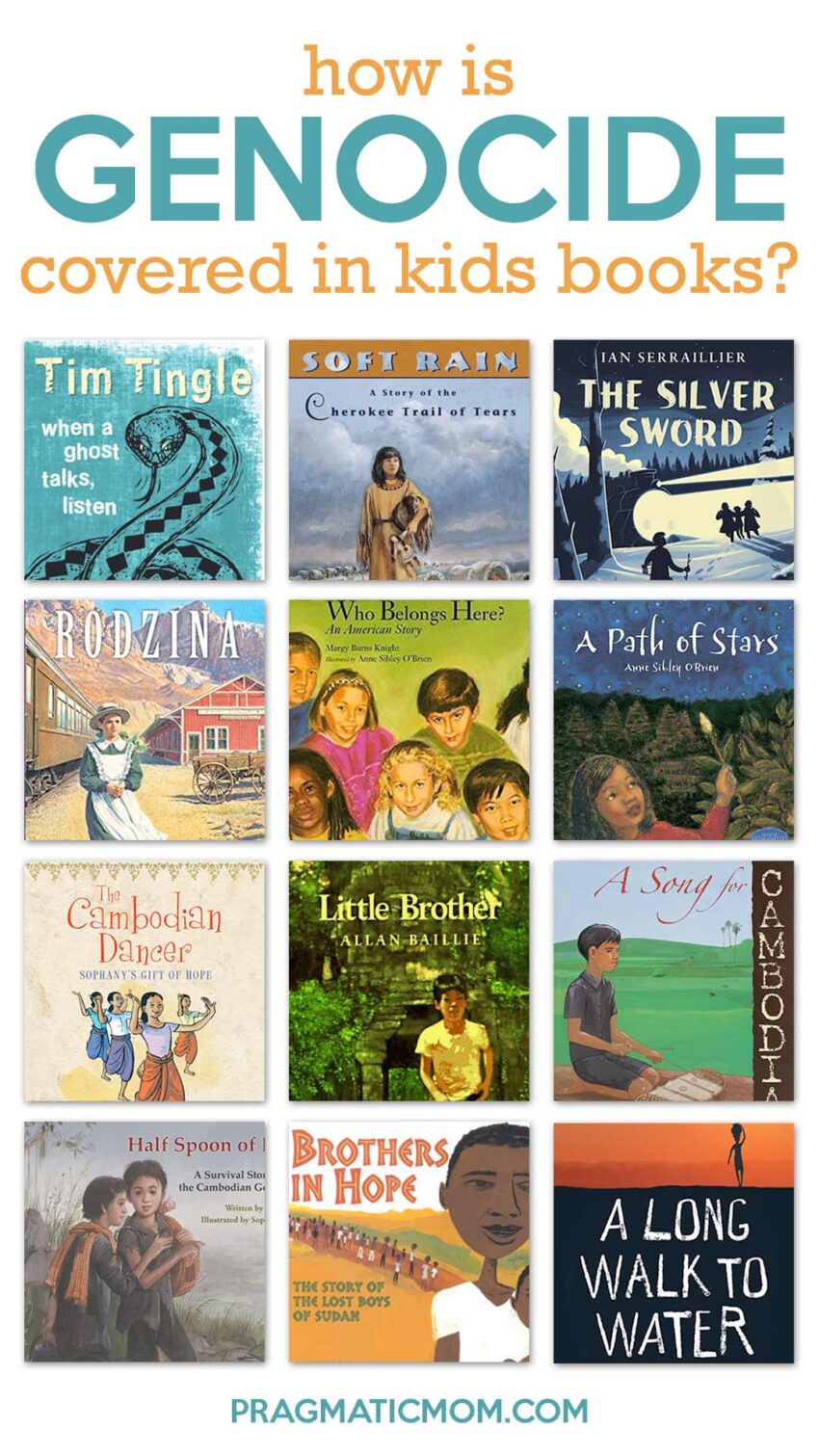




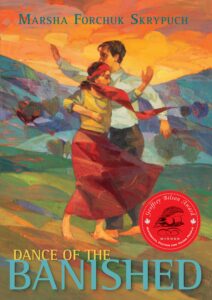





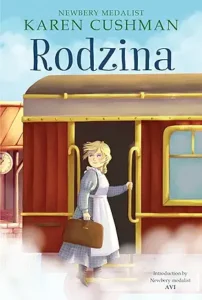





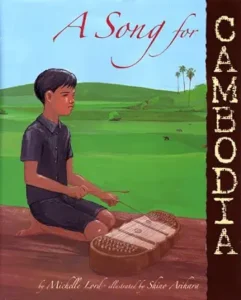




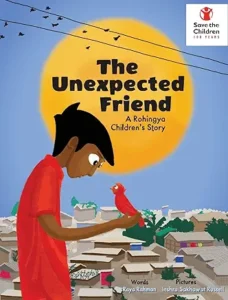


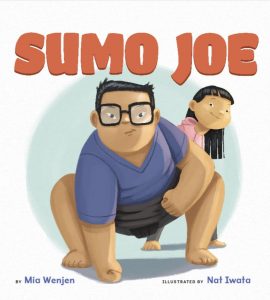







Thank you for sharing this important information on genocides. When I researched genocides for middle grade novels, I was surprised at the number of genocides occurred in the last century.
It’s such a tough topic, but this post lists some excellent books on the topic. Thanks for sharing it as part of Multicultural Children’s Book Day!